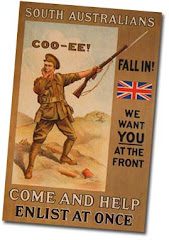
Jesse Strange was a son of Henry Strange and Charlotte Strange (nee Ricks). He was born in Cherry Gardens in 1887 and attended the local public school. As a teenager he won prizes for his garden produce at the local agricultural shows in 1901 and 1902. He then worked as a gardener in Cherry Gardens, and under the leadership of his father, became an active member of the Independent Order of Rechabites, a friendly society that encouraged temperance.
He enlisted on 2 June 1915 at the age of 27, and joined the 4th reinforcements to the 27th Battalion. After a stint in Keswick Hospital with measles he sailed to Egypt and joined A or 'Ack' Company of the battalion at Tel-el-Kebir in late January 1916. After another stint in hospital he sailed to France but was found to have contracted the mumps and was hospitalised in Marseilles on arrival. He caught up with the battalion on 23 April 1916. The 27th Battalion took part in its first major battle at Pozieres between 28 July and 5 August 1916. On the final day of that battle Jesse received a gunshot wound to his right arm and was evacuated back to England.
Jesse's wound was mild and he recuperated quickly, rejoining the battalion in France in early December 1916. The unit participated in minor attacks during the German withdrawal to the Hindenburg Line in early 1917. Jesse reported sick with influenza in early September 1917 and did not rejoin the battalion until early January 1918. After two weeks leave in England in February 1918 he returned to the battalion. In April 1918 the battalion fought to turn back the German spring offensive, and in May Jesse returned to hospital for a further month, again with influenza.
He rejoined the 27th Battalion on 4 June 1918, and the following day the battalion entered the frontline near Sailly-le-Sec. On 10 June 1918 the battalion attacked and captured German trenches around Morlancourt. Sometime on 11 June 1918 Jesse was killed in action, probably during heavy German shelling of the forward posts the 27th Battalion established after the attack. His cousin Charles Ricks, who was also serving with the 27th Battalion, had been killed on the first day of the attack. Despite the efforts of Jesse's brother Arthur, the Red Cross were unable to find out any details about Jesse's death.
Jesse's body was never located, and as a result his name is on the Australian National Memorial, Villers-Bretonneux, along with many other Australians with no known grave. His photograph was displayed in the Cherry Gardens Public School after the war alongside other former students that died in the war. His name is inscribed on the Cherry Gardens War Memorial and the State National War Memorial.
He enlisted on 2 June 1915 at the age of 27, and joined the 4th reinforcements to the 27th Battalion. After a stint in Keswick Hospital with measles he sailed to Egypt and joined A or 'Ack' Company of the battalion at Tel-el-Kebir in late January 1916. After another stint in hospital he sailed to France but was found to have contracted the mumps and was hospitalised in Marseilles on arrival. He caught up with the battalion on 23 April 1916. The 27th Battalion took part in its first major battle at Pozieres between 28 July and 5 August 1916. On the final day of that battle Jesse received a gunshot wound to his right arm and was evacuated back to England.
Jesse's wound was mild and he recuperated quickly, rejoining the battalion in France in early December 1916. The unit participated in minor attacks during the German withdrawal to the Hindenburg Line in early 1917. Jesse reported sick with influenza in early September 1917 and did not rejoin the battalion until early January 1918. After two weeks leave in England in February 1918 he returned to the battalion. In April 1918 the battalion fought to turn back the German spring offensive, and in May Jesse returned to hospital for a further month, again with influenza.
He rejoined the 27th Battalion on 4 June 1918, and the following day the battalion entered the frontline near Sailly-le-Sec. On 10 June 1918 the battalion attacked and captured German trenches around Morlancourt. Sometime on 11 June 1918 Jesse was killed in action, probably during heavy German shelling of the forward posts the 27th Battalion established after the attack. His cousin Charles Ricks, who was also serving with the 27th Battalion, had been killed on the first day of the attack. Despite the efforts of Jesse's brother Arthur, the Red Cross were unable to find out any details about Jesse's death.
Jesse's body was never located, and as a result his name is on the Australian National Memorial, Villers-Bretonneux, along with many other Australians with no known grave. His photograph was displayed in the Cherry Gardens Public School after the war alongside other former students that died in the war. His name is inscribed on the Cherry Gardens War Memorial and the State National War Memorial.
Photograph: Courtesy Don Watton







No comments:
Post a Comment